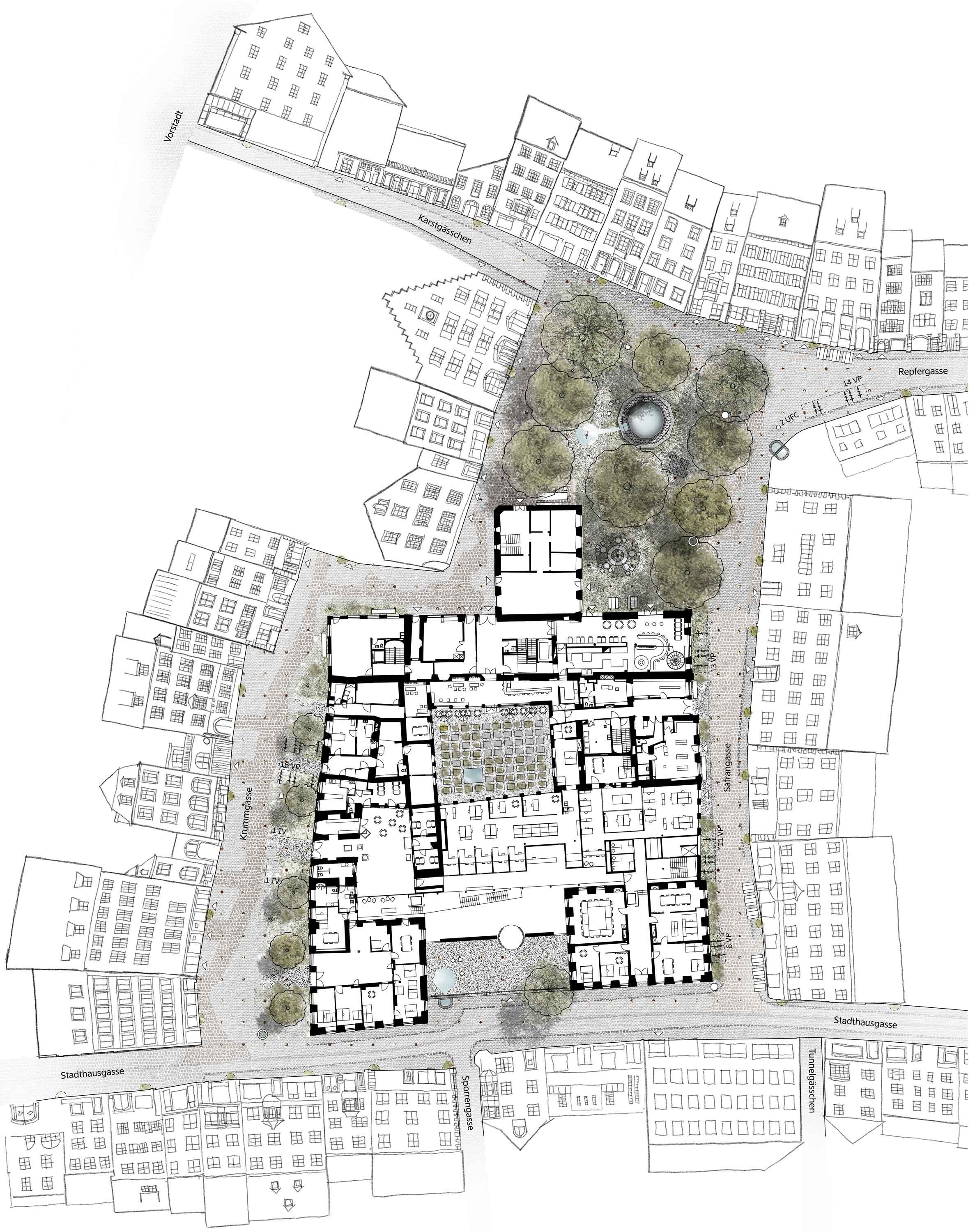Sashiko : Walther-Bringolf-Platz, Schaffhausen
Public Competition, 2024
3. Prize :
Foundation Award 2025 : 1. Prize :
















Sashiko (Japanese for ‘small stitches’) is a textile decoration technique from Japan.
Sashiko is originally a repair technique used to mend damaged clothing. In this type of traditional embroidery, the so-called preliminary stitch is used to create motifs.
The reuse achieves historical continuity. The design of the familiar surfaces is continued and transferred to a new constellation.
The material, the paving, is still on site, but finds a new place, a new form or is placed in a different context.
The procedure is based on the process of bricolage (Claude Lévi-Strauss, La pensée sauvage, 1966).
This involves collecting found and available materials and methods from a repertoire. These are combined in dialogue by actively relating them to other elements of the repertoire and transferring them into a new constellation for the goal to be achieved, the result of the bricolage process.
Sashiko is originally a repair technique used to mend damaged clothing. In this type of traditional embroidery, the so-called preliminary stitch is used to create motifs.
The reuse achieves historical continuity. The design of the familiar surfaces is continued and transferred to a new constellation.
The material, the paving, is still on site, but finds a new place, a new form or is placed in a different context.
The procedure is based on the process of bricolage (Claude Lévi-Strauss, La pensée sauvage, 1966).
This involves collecting found and available materials and methods from a repertoire. These are combined in dialogue by actively relating them to other elements of the repertoire and transferring them into a new constellation for the goal to be achieved, the result of the bricolage process.


